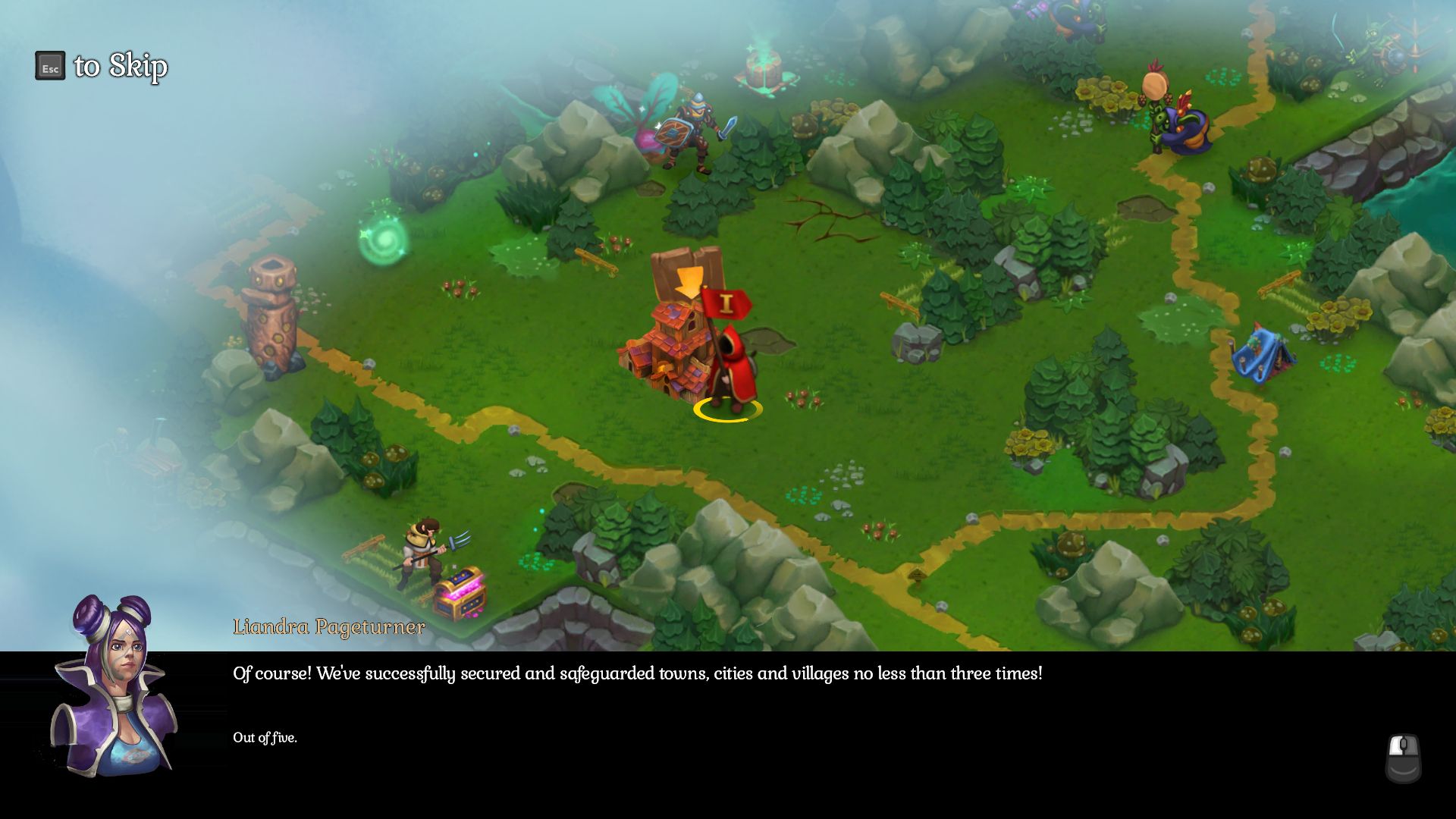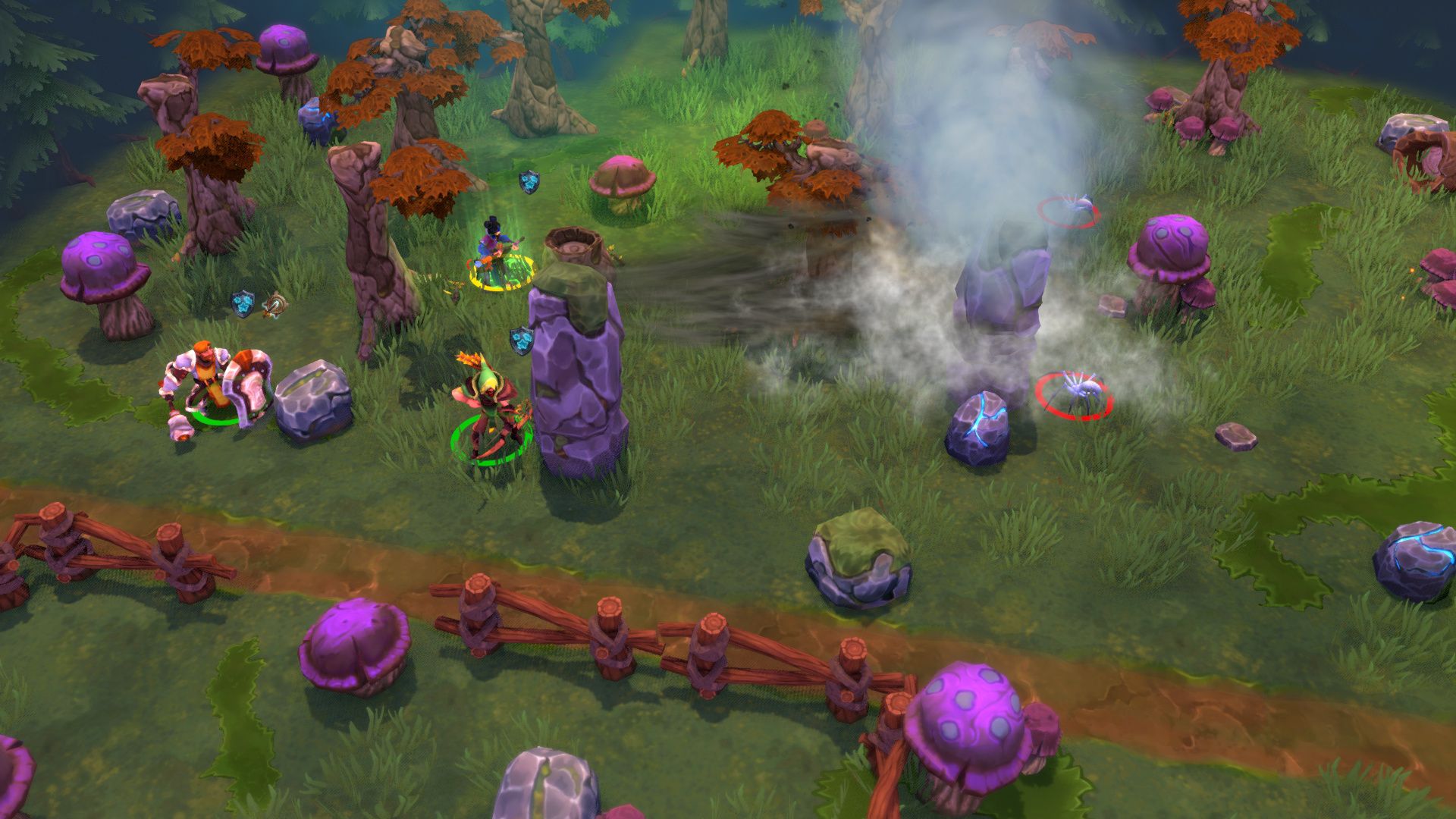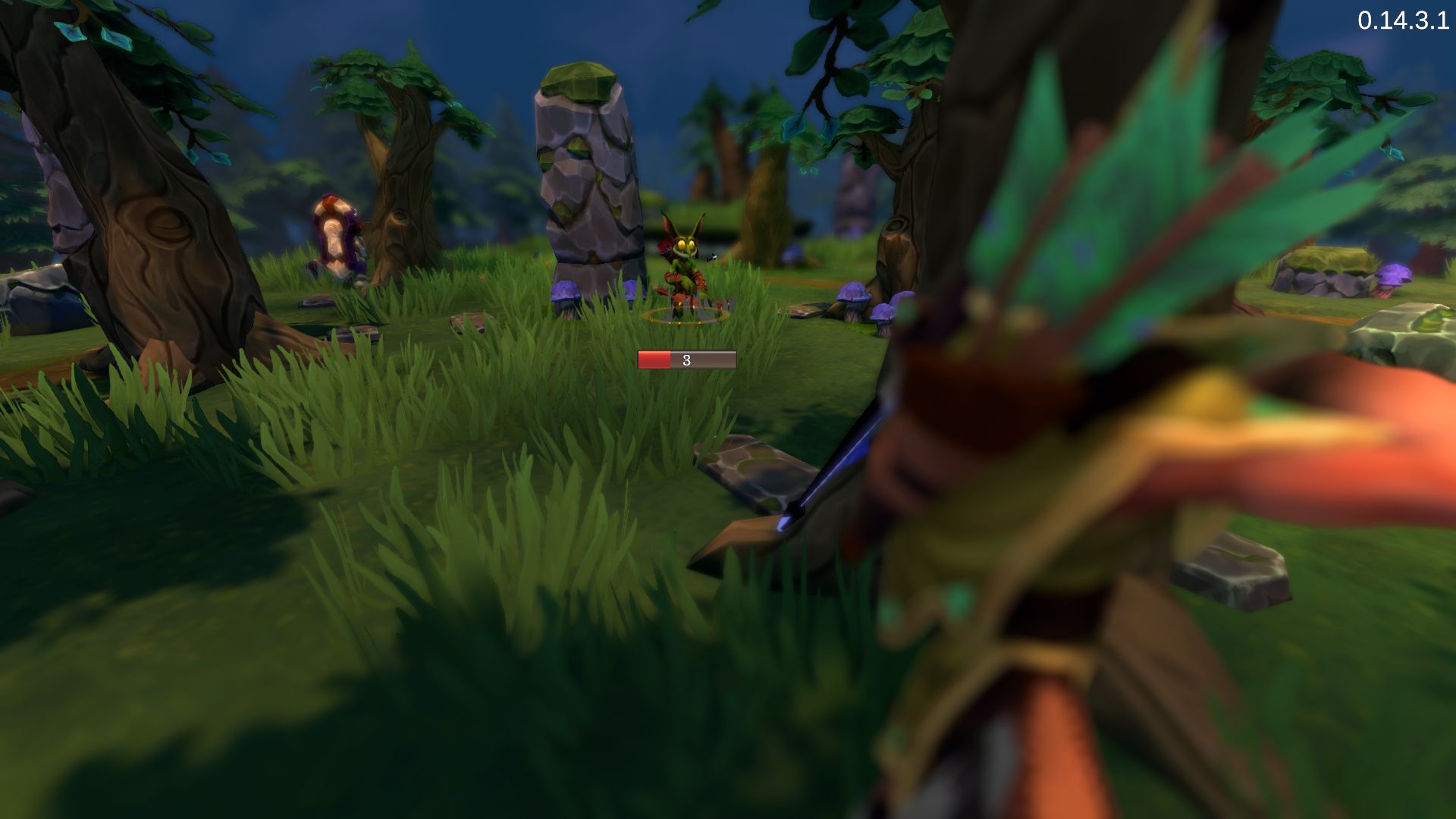Exiting Steam Early Access after two years of player feedback and iteration is Fort Triumph, a turn-based strategy-tactical RPG hybrid with a lot of personality and robust, engaging gameplay. The ambitious title was developed by CookieByte Entertainment, a small Tel Aviv studio who crowdfunded the project on Kickstarter . Its roots run deep in the Dungeons & Dragons Western RPG tradition, relying on the genre’s well-trodden themes, faces, and design conceits, while its simple, refined art style rests between that of its digital cousins World of Warcraft and League of Legends. Despite its familiar comforts, the game boasts a disarmingly sharp sense of humor and self-awareness, and its multiple campaigns provide more replayability than its $25 price tag lets on.
A crossroads between XCOM‘s squad-based combat tactics and Heroes of Might and Magic‘s turn-based strategy, Fort Triumph delivers on the concept exceptionally well. Four campaigns (starring Humans, Goblins, Undead, and Forest Utopians) see players strike out from their fort to fight enemies, collect resources, and take on a rival faction that grows in power alongside theirs in a series of story missions. The fort is a defendable hub where players construct and upgrade vital buildings and purchase heroes in exchange for Magic and hilariously named Beetcoins, as well as obtain permanent gameplay buffs with Renown. Players’ forts automatically generate Beetcoins each in-game day, but they and Magic can also be found out in the game’s expansive overworld, while Renown is won through combat. (Despite the obvious opportunities for them, Fort Triumph forgoes microtransactions entirely at launch.)
While the game’s serviceable strategy elements take place on a slightly unappealing 2D map, the real meat of Fort Triumph is in its 3D squad-based combat. Mission scenarios, which range from enemy elimination to objective completion, are undertaken from the overworld, transporting a player’s party to procedurally generated maps to fight in excellently devised turn-based encounters. Owing to a sufficient wealth of class abilities and wide variety of tactical options, combat is as engaging as it is brilliant without over-complicating things. Taking cues from the likes of Into the Breach, its most creative and satisfying fixture are Physics attacks, allowing players to kick enemies into one another and send splintering objects crashing down upon them to damage, stun, and expose them, opening them up to further attacks.

Neither those who crave XCOM-levels of punishment nor genre newcomers will be disappointed, as Fort Triumph has a well-paced difficulty curve for campaigns and provides a few difficulty settings for playthrough, which can range from getting one’s bearings to a constant fight for survival. Squad member perma-death is on by default to lend weight to every move, and losing a specialized squad member early on can be devastating without a mission restart (luckily, proper save-scumming is prevented by maps procedurally regenerating). Familiarity aside, the game provides plenty of room to be surprised. It doesn’t approach Souls-like territory, but players are more or less tossed into the fray after an effectively brief tutorial, giving them space to become immersed in the world with each startling combat and story revelation.
Beyond raw mechanics, there’s lot to love about Fort Triumph‘s unassuming characters and story. Players can field multiple parties of up to five characters each, allowing for simultaneous offense and defense. Four standard RPG character classes – the tank Paladin, support Mage, DPS Ranger, and glass cannon Savage – can be personalized not only with a diverse array of specialized abilities, but also with mild color customization and renaming to help players form a bond with their parties.

And it’s hard not to get attached thanks to the game’s dialogue, which magnifies and distorts tropes of the heroically pure Paladin, the barbarian Savage, and the stupid goblin to wonderful effect, and it consistently draws players’ smirks and laughter without ever taking itself too seriously. The story’s no different, providing absurd satire like Beetcoin’s need to be mined, magical crystal balls working more like spotty two-way video calls, and the world’s literal embodiment of evil casually chatting with minions about light topics like torture and slavery.
Fort Triumph may be exceptional, but it’s not perfect. As with most of the turn-based tactics genre, attacks will land or fail based on numerical hit chance percentages. This all-too-common reliance on obfuscated probability is a surefire method to frustrate players, whose human inability to properly anticipate outcomes would have better been overcome by taking one more cue from Into the Breach, whose input randomness removes RNG and goes all-in on player responsibility. Other small annoyances include a strange inability to remap controls and hot keys, as well as some combat camera awkwardness, which sometimes forgets to refocus on players and can go a little wonky during cinematic shots triggered by critical hit and fatal blows.

Aside from those minor complaints, CookieByte Entertainment has built a rock-solid composite of turn-based strategy and tactics gameplay, and the end result is easily on-par with the XCOM franchise and Obsidian Entertainment’s best modern efforts. Its combat is smart and entertaining, its story and humor are exemplary, and most of what little it currently lacks or could improve upon will likely be ironed out post-launch, as the game has been well-supported and player-focused since its early access development period began. Fort Triumph is worthy of any PC player’s time, especially lovers (or even haters) of the fantasy RPG genre.
Fort Triumph is available for PC. Screen Rant was provided a Steam key for the purpose of this review.




